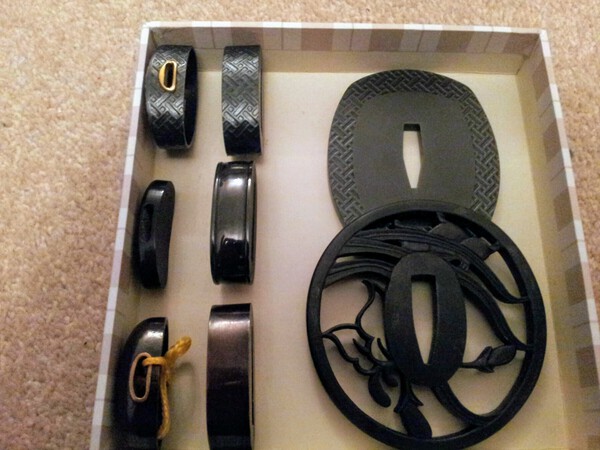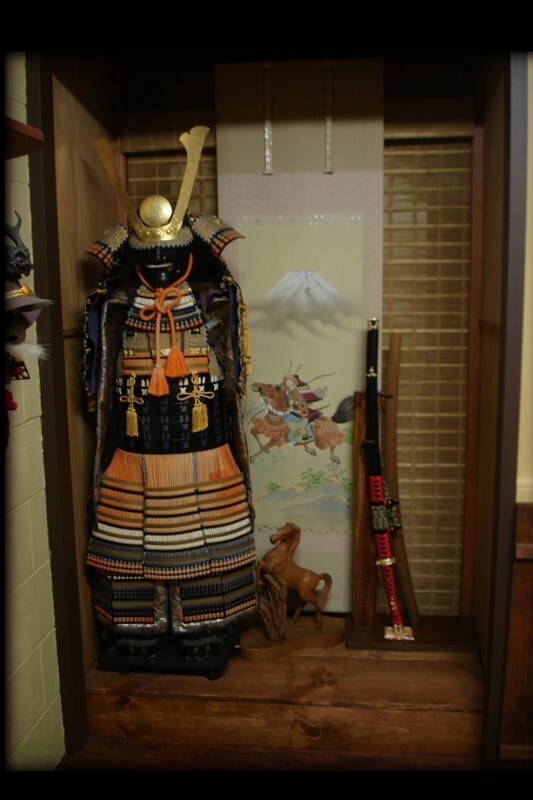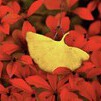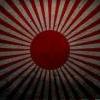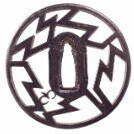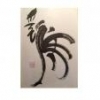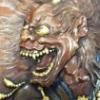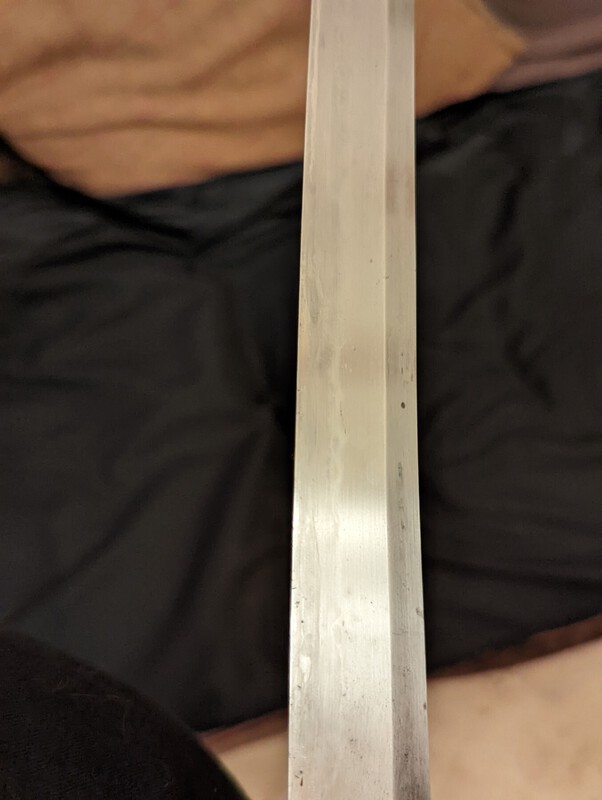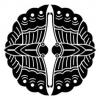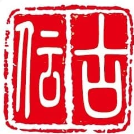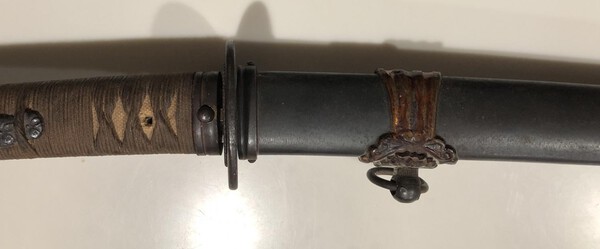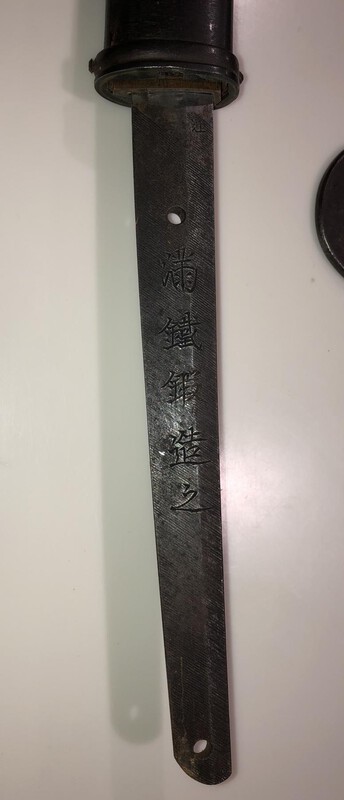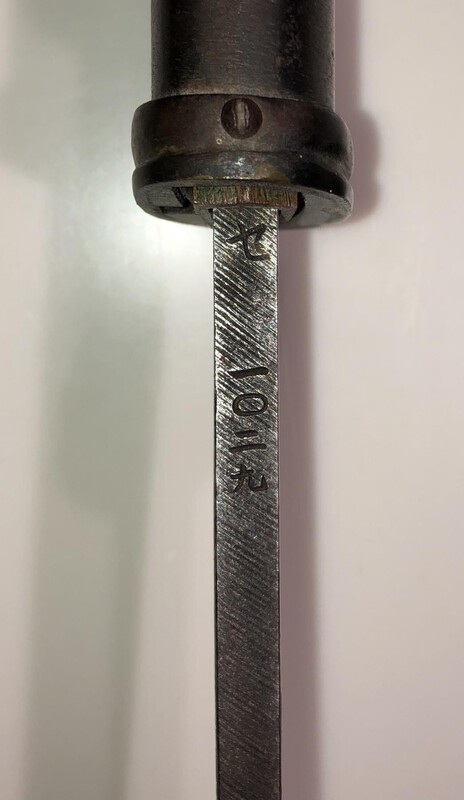Leaderboard
Popular Content
Showing content with the highest reputation on 12/09/2021 in all areas
-
8 points
-
The results for Jūyō 67 just came online. https://www.touken.or.jp/Portals/0/第67回重要刀剣等指定品発表.pdf Another very interesting session with lot to think about. Of course lot of wondering on my part as not having info or pictures of the items. I was very excited to see two Ōdachi in this session as they are incredibly rare. I believe these ones Morimitsu & Masaie are in the collection of Yasukuni Jinja. Both were previously unknown to me and seem to be longest examples by each ot the smiths that I am aware of. I did the swords in similar format as I've done before for my index and eventually when I have time for all the non-blade items I will update that to include the most recent results. Jūyō 67 swords.docx6 points
-
Good evening everyone, I suppose this is the right place, though its not because its for sale I feel like writing this. I've been looking at this naginata for a couple weeks now. The sugata of this sword, its atmosphere, is just awe inspiring. I sit behind my monitor with my jaw hanging, nearly drooling over my desk. This naginata (Tokubetsu Juyo and I'm not even thinking twice on why (leading to wondering how many naginata even went beyond Juyo)), is one wicked piece. I mean - look! It leaves me awestruck - https://www.nipponto.co.jp/swords/JT988980.htm4 points
-
4 points
-
Tony, unprotected carbon steel surfaces are very reactive with different agents. Besides water or moisture, your discolourations might have been caused by household vinegar, blood, orange juice or any other fruit or vegetable juice, salt water, saliva, chemical vapours of acids and halogens a.s.o. Even an accidental short-period contact could affect the surface, and when you wipe the surface 'clean' immediately, it might even be too late to avoid staining. Usually, this layer of corrosion is not thick, and will be easily removed by a trained TOGISHI without loss of much material. All abrasive agents you may have at hand will work fine and also remove the discolouration, but they have a serious drawback: they will also take metal off where they shouldn't: on the SHINOGI and other usually crisp angles which are the sign of a well cared-for blade. As a consequence of an inappropriate grinding of a blade, any additional authentic polish will mean to take more material off the surface to restore these crisp angles. It is important to remove active red rust as this 'eats' away the steel, but this unwanted 'patina' as you show it on your blade is not dangerous as long as it does not change its state and get worse. Chemical solvents (alcohol, acetone, trichlorethane, nitro thinner, ether, paint stripper and alike) will only do what they are made for: Dissolving chemicals which may appear as paint, plastics, grease, oils, and more of that. They will work with organic chemicals but mostly not with anorganic chemical compounds of metals or minerals. So you may remove any paint from a blade without affecting the metal, but any form of corrosion (red, grey, or black) will require a polish by the hands of a TOGISHI.4 points
-
Here is a good explenation about the patterns. Traditional Japanese Patterns | Nippon.com This room plays with different patterns3 points
-
Nice blade by Yamagami Akihisa of Niigata. Just for us WWII nerds (I mean Bruce and me) can you tell us if there is a stamp and number on the tip of the date side of the tang? Usually a 'matsu' kanji in a circle with a number. As this blade is dated sho 17/11 I think it should be numbered about 575 Also, does it have a star stamp on the top of the name side of tang. I have one by his elder brother. Regards,3 points
-
武州江戸住進秀 (Bushu Edo ju Yukihide) – Yukihide living in Edo in Musashi province 文化二年八月日 – Bunka 2nd year, 8th month (August, 1805)3 points
-
The son and successor to 正次 was 正幸 who made swords in Kyōto until WWII. (?) http://www.mus-his.city.osaka.jp/education/publication/kenkyukiyo/pdf/no13/BOMH13_11.pdf3 points
-
2 points
-
2 points
-
My latest sword is a Type 3 Gendaito blade signed I believe by AKIHISA. The fiitings are in good order with a mon attached. Having checked the blade there are no evidence of any markings only what’s on the tang. The saya is flat black lacquer on a wood sayer with a matching to fittings bottom chap. Many thanks Gareth2 points
-
Hi Mike, If you drill out the rivet be careful not to drill deeper than just the peened head of the rivet; you don't want to mess with the handle or, as mentioned, with the tang (nakago) of the blade. You could try also a small cold chisel on top of the washer followed by a punch to push the rivet out. However you go at it, it would help if the sword were held steady. This could be someone to hold all in place while you use the drill or chisel, or you could clamp the tsuba in a wooden jaw vise on a workbench (as long as the tsuba is plain iron without soft metal inlay). Plenty of padding between the sword parts and bench & vise are called for. Don't be in a hurry to have your sword polished. Polish isn't necessary to preserve the sword, a light coat of oil will do that, and the more time you take to learn about the swords and polishing the happier you will be with the results. Grey2 points
-
It's called oxidation and whatever you try to do will just make it worse.2 points
-
Peter, 中 (naka/chu) just means 'middle' or 'between' or 'inside' or 'during', etc. I guess it could also mean sticking them all on a skewer, like 串 kushi for a shish kebab.2 points
-
Very nice, can see it being useful for meetings. Well, this is a case where the Kake really warrant some good Tachi, and not the other way around!2 points
-
It's the most staining I've seen on one blade. I have several blades with spots, like you showed on the other side, and I've had no success in getting them off. It's like a stain that is embedded into the steel. You can try 90%+ alcohol, but in my experience, it's only shined the surface but didn't remove the black stains. Unless someone has some magic cure, I agree with Ray that only a polish will solve it. There ARE cheaper versions of polishing. You don't have to pay for the most expensive kind. I'm not experienced in the terms, but when I had mine polished there were 2 or 3 versions I could pick from and some were cheaper than others.2 points
-
Kamakura is famous for a style of carving and lacquer work; Kamakura-bori - when I lived there this was in the window of a local shop specializing in Kamakura-bori ware. I used to pass by about once a month and try to buy it but the owner said it was there for advertising and not for sale - he said I couldn't afford to have him carve another...2 points
-
The Tsuba looks original, Mauro, and the paperwork although clear about the subsequent addition of the cross, does not suggest how much later the work was done. At a slight angle, and with a Ken blade at the top, it looks to be made of silver. An interesting object, surely, whichever way you cut the cake.2 points
-
2 points
-
I'm surprised they thought it was worth photographing and listing. The figures somewhat remind me of Japanese Keshi figurines, but with a lot less detail and much less visually interesting.2 points
-
A few years ago I spent quite a long time studying a traditional textile pattern tsuba made of copper (in hand), and I would have been willing to bet money that the pattern was created by etching. As it was copper, my guess would have been ferric chloride, but I haven't been able to find any info on if this was known to and used by the Japanese of old. To satiate my curiosity, I later had a goldsmith use this technique to quite deeply etch copper plate to see how it would turn out. I gave away the item to a friend, but I think I still have a photo. Edit to add photos. The commissioned test piece mentioned above is the tsuba and F/K at the top of the first image. More detail is visible in the second image. Edit 2, everything shown in these images is modern. The other fuchi/ kashira were made by Patrick Hastings and the other tsuba is by Jesus Hernandez. They've all now been mounted on shinken/ iaito for martial arts use.2 points
-
2 points
-
Greetings sword friends, I am reporting a sad, serious state of affairs here related to our German friend Guido Schiller. I have just spoken with Guido's wife, Minako, and she said Guido has been in intensive care in Germany since some time in October. The stroke has robbed him of speech and mobility. At this point, the physicians have not indicated prognosis, other than it is going to take time. Some friends had contacted me because their mail to Guido went unanswered and now we know why. Please send positive cosmic energy to Guido. NMB still needs his dry and clever wit! Best, Robert Hughes1 point
-
All, I asked Brian to upload an article titled “Swords of the Tea Masters” in pdf format. It was in a periodical called “Chanoyu Quarterly” which is now out of print. While not in-depth Nihonto info and written more for a tea ceremony practitioner audience, some might still enjoy the read. You will find it in the ‘download’ section. Hope you will find it interesting. Mark S.1 point
-
I just love how powerfully this strikes you!!! Ha! I laughed in delight and still am smiling as I write this! It is the joy of our collecting that makes it all so fun. Go for it man!1 point
-
I posted my thanks on the download page, but to reiterate - I really appreciate your article post. We spend a lot of time on the mechanics of our collecting, but what I love is when we get the smallest of glimpses into the real people and lives that these blades came from. This article has several stories (real and legendary) of the people involved around these blades, each one worthy of a book and/or movie in everything human - pain, dedication, loss, sacrifice, honor... the list goes on. I love these peeks into the history these blades came from!1 point
-
Yes best Nagamitsu i have seen in a while. I hope it will end in good hands.1 point
-
I've been butting heads with Paul over this for a good while However I must agree with his analysis on that it is not the best Shikkake work qualitywise. The size of it and how it has been preserved make it rare and precious. You cannot find many ubu naginata of this length from Nanbokuchō period surviving. I was looking at the data that I currently have and I think I have 16 naginata of around this size or larger from Kamakura & Nanbokuchō periods that have survived to this day. Of them 13 are Bunkazai, Bijutsuhin or non-classified items owned by shrines. So in overall the chances in owning a naginata of this size and age are very slim even for someone in Japan.1 point
-
I second that request. I've checked all 5 of the Akihisa in my files and the numbers are at the end of the nakago (tang) on the dated side.1 point
-
Piers, many thanks with translating this symbol! I think it is logic marking and make sense. Best regards Peter1 point
-
1 point
-
Yeah I think I have seen some that seemed just wrong on ebay (I'm still fairly new so can't articulate why but just a gut feeling). As an aside a metal 3D printed Tsuba actually seems pretty cool! (even though it's not traditional at all). You could make some very interesting and near impossible patterns (by hand) with 3D printing. Thanks for the link!1 point
-
1 point
-
1 point
-
The kick in the tsuba just looks as though the soft copper material has bent. That is one of the reasons for the move to aluminium.1 point
-
Hi treasure hunters, Thanks again to everybody who joined, I have uploaded several pictures on facebook as here it would overrun the file size limit. https://fb.me/e/2ex17pWCK Overall I was positively surprised how open all the dealers were regarding me taking pictures of the items. I also made one new friend it seems, the guy who had the blades, as he was very kind explaining what he knew. Also shared his lunch with me even though I tried to insist not to. Looking forward to our next hunt together! Cheers Paul 20211205_002953744_iOS.heic1 point
-
1 point
-
Look at the Ebay site he has sold hundreds of the fake fittings, one more way to ruin a hobby for the new person everyone should look at what they are producing to educate yourself Fred Geyer1 point
-
That’s pretty cool! And it’s clearly not a postwar add-on. you might as well include me on that list of vicarious voyeurs!1 point
-
1 point
-
The discussion reminds me a bit of a good acquaintance of mine. He wanted to sell a used car here in Berlin on a well-known used car market as quickly as possible and therefore cheap. But to his astonishment, there were hardly any interested parties. They got into conversation with other sellers and asked where the catch was, because the car was so cheap. They assured that the car was perfectly fine. The answer was that at that price, many potential buyers would doubt it. So they doubled the price on the sign and it didn't take long for the car to find a buyer. What if the Tanto had no paper, only Tsuruta-san's opinion at the same price? His opinion would be doubted. It could possibly be a late Koto, early Shinto, or a Shinshinto. But now it has TH, and what if the Tantol cost 9K? Would some be more comfortable then? I admit I don't see enough of the Hada, that may be due to the polish. It would just be better to be able to look at the tanto in your own hands. But that's the way it is with the www. Bottom line, it's a very nice dagger with TH on Tametsugu (nicer in any case than an attribution to Ko-Uda or Etchu Mitsuyuki - but that wouldn't change the beauty of the tanto). No more and no less. @Rivkin, I don't think Kinju, with Kanenobu I would expect prominent Masanagare. Basically I have no problem with Tametsugu....1 point
-
1 point
-
1 point
-
Very Nice Roger, I was saying to Dale (Spartancrest) the other day, that I am surprised Gary Murtha's guards which he has advertised are still available. They are good interesting examples, priced reasonably and are "published". That's a bit of a triple whammy. With some foresight, his guards could be well sort after in the not too distant future edit: and for the record, I have just secured one that I have been very interested in for a long time1 point
-
It can’t be a coincidence that it matches the zigzag pattern of army general tassels. I bet some admirals got a private contractor to make these for them.1 point
-
John, How about adding it to the Gallery with a few comments about it?1 point
-
1 point
-
1 point
-
1 point














.thumb.jpg.bc10b59027a00aa142dce0349f3ba9e0.jpg)









